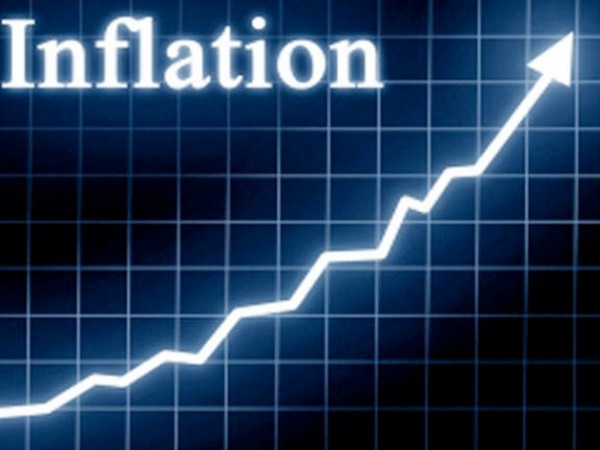
New Delhi: Bangladesh's interim government, led by Professor Muhammad Yunus, has faced significant challenges in controlling inflation.
Experts highlight that inflation, economic reforms, and macroeconomic stability remain major hurdles for the administration. Job losses, shrinking wages, and skyrocketing prices are reversing hard-won gains in poverty reduction—threatening to push millions back into extreme deprivation. Inflation has remained persistently high, with the point-to-point inflation rate at 9.17% in April 2025 and a 12-month average of 10.21%
Bangladesh now suffers the highest inflation rate in South Asia, enduring 25 consecutive months of price rises above 9%. With persistent economic stagnation and fiscal constraints, the country faces mounting challenges in taming inflation and safeguarding vulnerable populations.
The General Economics Division (GED) of the Planning Commission released a report on 7 May highlighting the sharp rise in rice prices as the primary driver of food inflation in March, followed closely by fish, vegetables, and fruits. According to the Monthly Economic Update Report – April 2025, rice contributed 34.14% to food inflation, while fish accounted for 27.05%, vegetables 14.20%, and fruits 10.93%.
The surge in rice prices was largely attributed to Aman crop losses caused by flash floods in several districts during September and October, as well as higher global market rates. Particularly concerning is the disproportionate burden of inflation on rural areas, where price increases have been more pronounced, signaling an urgent need for better food supply chain management to mitigate escalating costs.
Speaking at the unveiling of the GED report at a press conference in Sher-e-Bangla Nagar, GED member Monzur Hossain emphasized that inflation remains one of the most pressing economic challenges, lamenting the lack of detailed analytical reports on its root causes and the contribution of various products to price surges.
The World Bank warns that nearly 3 million more Bangladeshis could slip into extreme poverty by FY25. The extreme poverty rate—defined as those living on less than $2.15 per day—is expected to rise from 7.7% in FY24 to 9.3% in FY25. This reversal marks a stark contrast to past economic progress.
The World Bank’s Macro Poverty Outlook (MPO) reveals that soaring prices and job losses are severely impacting household welfare. In the first half of FY25, nearly 4% of workers lost their jobs, while wages fell by 2% for low-skilled workers and 0.5% for high-skilled workers.
Professor Mustafizur Rahman, a distinguished fellow at the Centre for Policy Dialogue (CPD), describes inflation as the most destructive force eroding buying power. “Despite poverty reduction efforts, millions remain precariously close to the edge—just two days without work could push 2 million people into poverty,” he warns.
Why Can't Bangladesh Tame Inflation?
The IMF projects inflation to hover around 11% in FY25. Analysis from Bangladesh Bank reveals that domestic products—rather than imports—are now driving inflation. This contradicts the narrative that inflation stems solely from expensive foreign goods.
Bangladesh’s fragmented supply chain and reliance on intermediaries create artificial price hikes. Despite stable global commodity prices, domestic inefficiencies—such as distribution bottlenecks and production cost increases—continue to push inflation higher. Economist Dr. Jahangir Alam points to agriculture supply-side constraints as a major inflationary factor. “Once we run out of winter crops, prices will rise again. Market intermediaries must be curbed, or inflation will remain unchecked,” he explains.
According to Dr. Zaidi Sattar, chairman of the Policy Research Institute (PRI), cost-push inflation cannot be solved by monetary policy alone. Fiscal interventions are required to mitigate rising production costs, worsened by taka depreciation.
Bangladesh's battle against inflation is deeply intertwined with its broader economic challenges, including sluggish revenue collection, constrained investment, and high interest rates. Weak revenue mobilization threatens to stifle growth further, and while government borrowing from commercial banks continues, the full extent of its impact on private credit and investment remains uncertain. However, persistently high lending rates—hovering around 15% despite a policy rate of 10%—could suppress private sector borrowing and stall economic activity.
A key concern is the Bangladesh Bank’s decision not to approve the government’s full borrowing target, leading to fewer bank loans than planned. If alternative financing measures fail, the government may resort to printing more money, exacerbating inflationary pressures. The Governor of Bangladesh Bank Governor Ahsan H Mansu has expressed that printing money while lamenting persistent inflation is an ineffective strategy.
To break this cycle, policymakers must prioritize revenue collection, reduce dependence on bank loans, and implement strategies to lower interest rates—ensuring a more sustainable path toward economic stability. Without decisive action, inflation will continue to erode purchasing power, deepen inequality, and hinder Bangladesh’s long-term development trajectory.
Additionally, Bangladesh's upcoming graduation from Least Developed Country (LDC) status in 2026 presents further economic challenges, including the loss of preferential market access and flexible financing options. While exports have shown resilience, the broader economic outlook remains uncertain, with low revenue mobilization, rising unemployment, and persistent inequality
________________________________________________________